Scented Bonsai Trees, Plant List [Bonsai]
Here is an interesting question I was asked recently. "What kind of scented trees can be grown as bonsai?"
Not a common question, but in seeking how to answer this question for a friend of mine, it led me to some surprising results. There are tons of incredibly interesting plants with a variety of wonderful aromas, and many of them work well when grown in containers.
For many people having scented plants nearby is a helpful way to create a healing space. Known as a therapy garden, it can promote healing, growth, calmness, and rest. Meditation and prayer from within a peaceful area filled with rejuvenation ambiance can give the sense of restoration of the soul, spirit, mind, and heart.
Bonsai trees work well in promoting a balanced zen garden space. To select trees for bonsai specifically for the scented property is an ingenious way to sneak in some medicinal healing magic into the sacred museum normally reserved for a very rigid art style.
In this article I will describe various species of plants that might work well as bonsai trees to create a wonderful scented garden area.
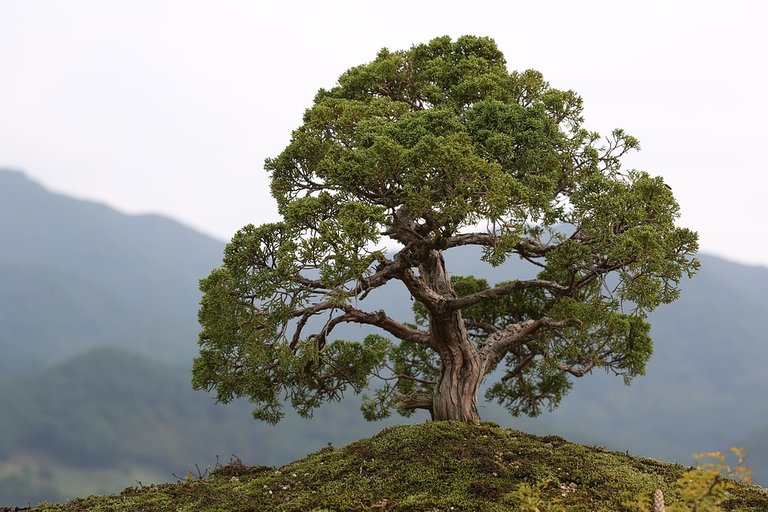
Traditionally, bonsai enthusiasts place value in trees that have small leaves, tapered trunks, and good design qualities. Flowering bonsai trees are also valued, but not so much when they lose their flowers. Scented bonsai... well, let's just say it isn't really valued at all. The bonsai traditionalists (snobs) regard scented trees as a garden novelty, and not ideal for bonsai if the tree cannot follow ancient design rules.
Below I have compiled a list of categories of plants that are regarded for having attractive scents. For enthusiasts interested in selecting a plant variety to grow, I made it easier by grouping these plants into the following categories:
- Conifers
- Herbs
- Citrus
- Vine-like Flowering Trees
- Flowering Shrubs
- Flowering Tall Trees
Feel free to skip ahead to the section that interests you the most.
Please share in the comments any plants you think should be added to this list below. I'll expand this article with any ideal suggestions.
Conifers
Any tree that develops seeds inside a cone falls into this category of tree. Most specimens have leaves in the shape of sharp needles or scaly tassels. Nearly all varieties of conifers are known for having a scented quality, often similar to an astringent citrus. Many also release explosive scents when the bark or needles are ripped.
Look out for witches brooms, or oddly shaped branch tufts that appear as abnormal areas of sudden growth on the tree. This could be a mutation on the tree or a fungal disease causing the tree to react in an unnatural way. A witches broom sometimes emits a ghastly odor. Prune off all affected branches and keep the area clean to help prevent it from re-appearing.
Firs
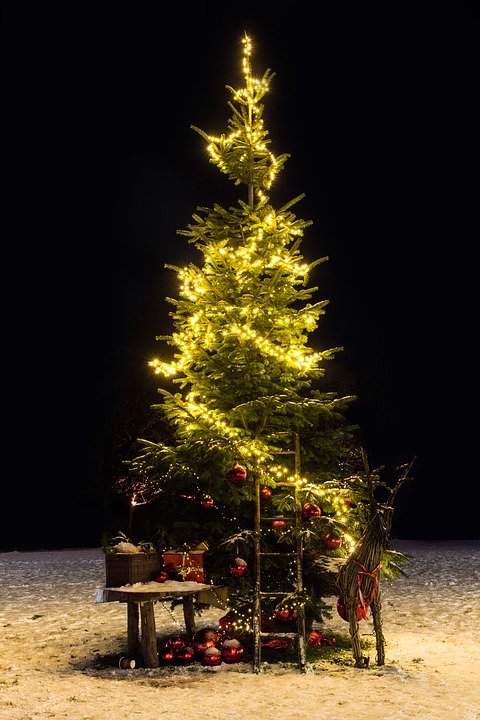
Grand Fir, Balsam Fir, Fraser Fir, and White Fir are all outstanding scented trees. Admired around the holiday season for the spicy Christmas aroma.
Hemlock
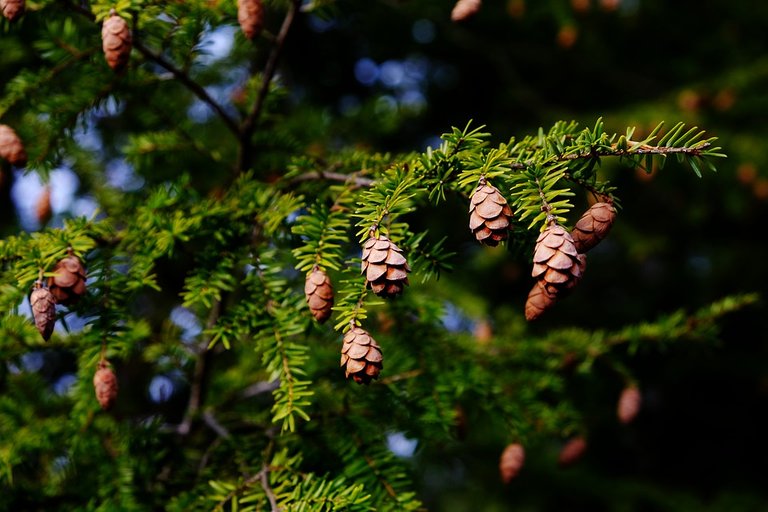
Hemlock is a conifer with a friendly, mild, lemon-pine perfume. The flat needles are soft to the touch, and can be easily crushed to better sniff the fresh sweetness. The soft wood closest to the cambium layer is edible and also has some of this scent, which makes it a mysterious secret ingredient option to try out as a flour substitute. In Springtime the tree itself has the most fragrance due to the new buds quickly pushing out bright green new needles.
As a scented bonsai tree, the sensation of aromas can be heightened by allowing the new growth buds in Spring to become super long. They will act as fans in the wind, constantly blowing in refreshed air.
Allowing a tree to become large, disproportionate, and constantly moving is an approach in bonsai that clashes with traditional teachings. Perhaps this could be considered a rock'n roll approach to shock traditionalists if designed effectively.
Douglas Fir
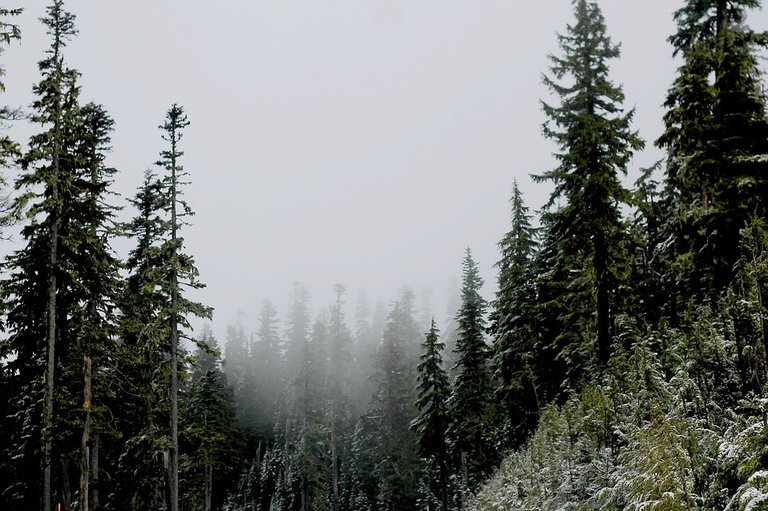
The coastal Douglas Firs in the old growth forests are believed to have more of a scent than the ones that grow in the arid Rocky Mountains regions. Has a magical old-growth forest scent with a youthful sweet lemon smell that fills the air especially in the cold, misty mornings. Plucking off a needle or tearing a branch also instantly exposes the scented sap to the air.
Sequoia

Among the tallest trees in the world. The bark and needles both emit a strong pine scent. Coastal Redwood is admired for its soft undertones and used for men's perfumes, while Giant Sequoia is more intense and sharp.
Juniper
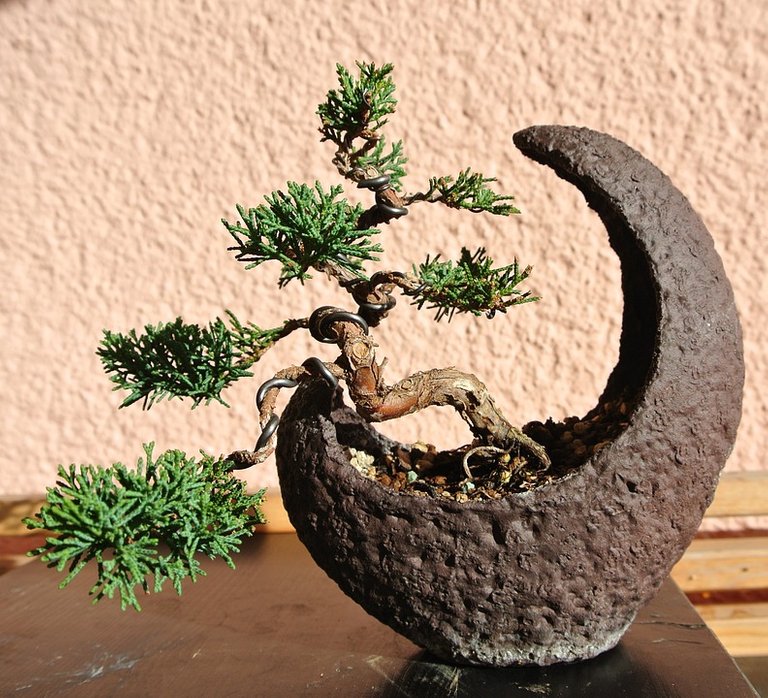
The scale-like boughs of this tree produces wrinkled blue berries in winter, and is sometimes used in producing jams and gin. The common variety of Juniper can sometimes smell like gin for this reason. California Juniper has a woody, cedar scent. Other varieties can smell like lemon or even pineapple. Juniper firewood is also prized for burning, because it can make a room smell of fresh cedar wood.
Shimpaku juniper is favored in bonsai because the needles are softer and do not have sharp ends. However, I have noticed the needles are also less fragrant.
Cedar
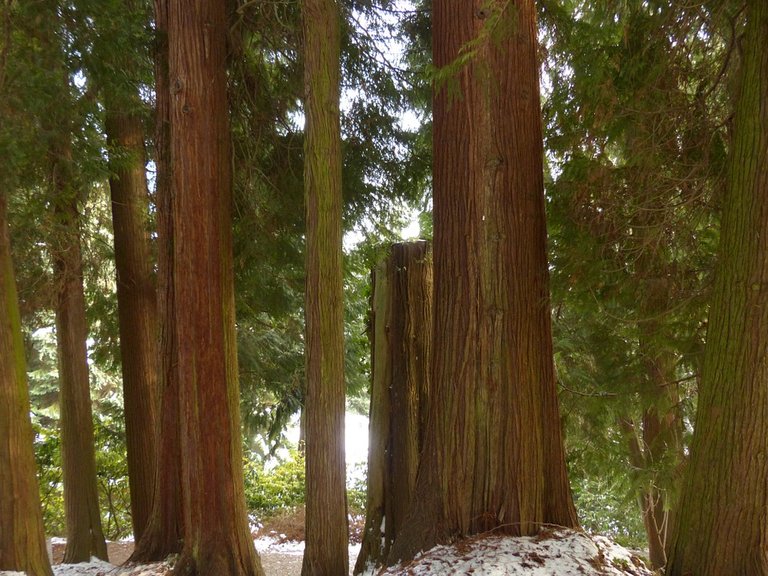
Incense Cedar (Calocedrus decurrens) can be smelled from a long ways off in the forest. For me, the waft of cedar wood is dark, dense, and holds things silent and still. It's almost suffocating. A great benefit is it keeps annoying insects, like mosquitoes away.
Western red cedar (Thuja plicata), not at all related to Incense Cedar, has a contradicting, delightful floral aroma.
Herbs
These woody perennials are commonly grown as herbs, used as flavoring spices for cooking, teas, natural remedies, and potpourri. Pluck off a few leaves, and chop them up, and they can be eaten raw or simmered into a sauce to let the oils steep through.
These all make excellent container plants. Rip off a few leaves and rub the oils between the fingers to get an instant whiff of invigoration.
Lavender
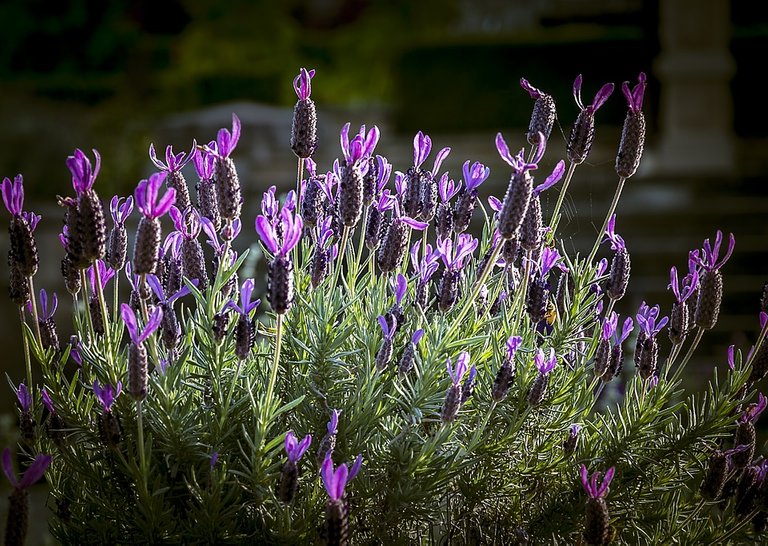
Many different varieties of lavender are available to choose from. Some have velvet white leaves, and many have genie magenta flowers that magically grant wishes for attracting bees and butterflies.
The lavender oil is stored inside the leaves. Break it up to rub the oil on the skin. The floral scent is known to be so calming and peaceful. It can help people to rest and relieve stress.
I discovered this makes a fantastic bonsai plant by accident. Prune it frequently if you want it to have a tree-like shape, because it often forms too many buds between the connecting branches. Cuttings can be brought indoors and rubbed on countertops to make a room smell cleaner. The scent also repels ants and flies.
Thyme
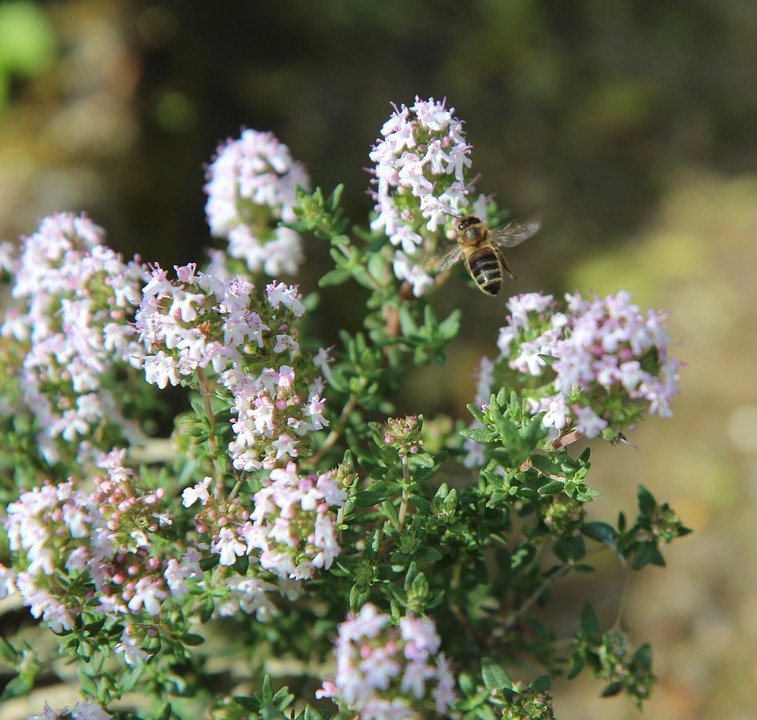
Although this has been well-known as a scented plant since ancient times, it was another accidental discovery on my part that it makes an instantly enjoyable bonsai tree.
Nearly every branch will twist and turn into wild directions on its own. I think this makes it a whimsical and romantic plant to look at. The teeny, tiny leaves are also perfect proportion for an attractive bonsai tree. The trunk will take many years to thicken, so give it lots of deep soil to encourage faster growth. Allowing the branches to grow long without pruning will also help the trunk to thicken up like a bonsai tree.
The savory leaves are admired for their flavor, and sure to enhance the appetite. Gives any drab, starchy food and soups a hint of a fresh, salad zing.
Rosemary
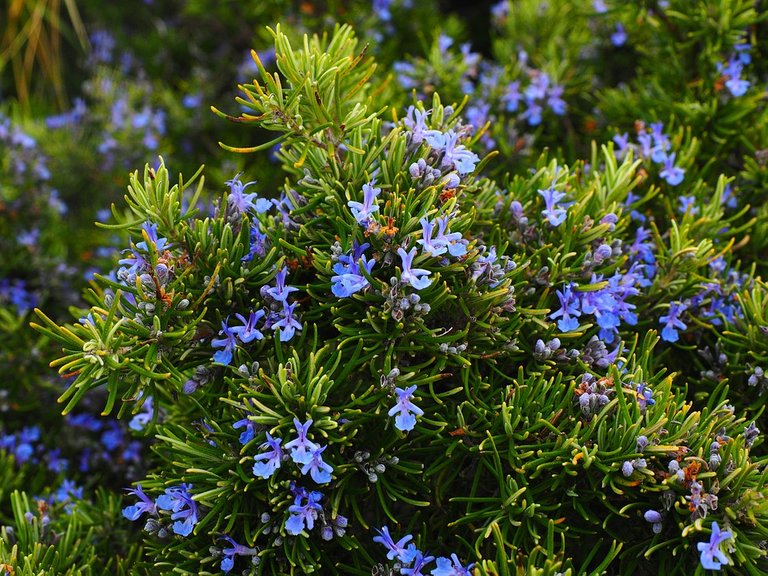
Another plant that benefits from a deeper root system. It grows a bit like lavender. The leaves smell of pine and citrus, and work well in cooking, especially with barbeque meats, roast poultry, pork, and fish. The branches will grow mostly upright like a broom, so use wire if you want them to grow into curvy shapes.
Some people prune and style the shape of Rosemary shrubs into fancy topiary designs. I've seen creative gardeners form the shrub into heart shaped twin trunks and also spirals twists. This plant will tolerate heavy pruning and grow back quickly as long as some green branches remain and the roots are strong.
Citrus
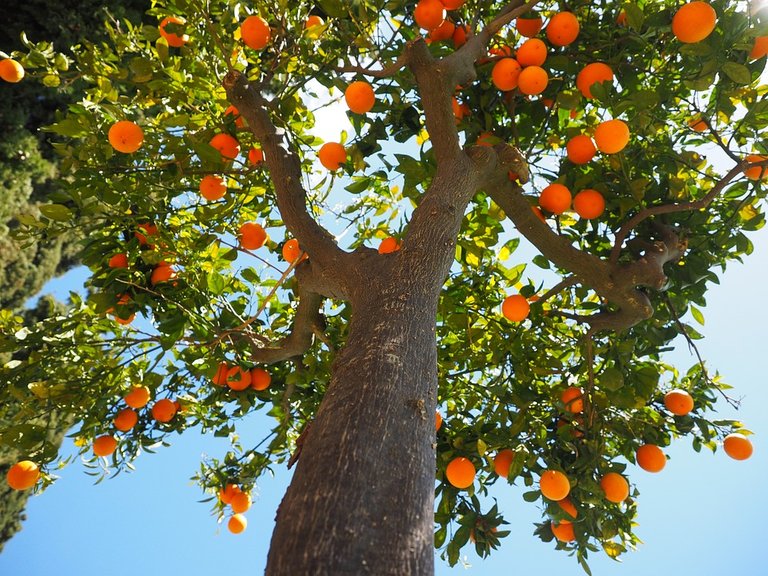
An evergreen that grows best in very warm climates where it is always sunny. It can also be grown in northern climates, and brought indoors during the winter months to avoid freezing. Not only are the flowers sweet and fragrant, the leaves represent the same lemony smell of the fruit. Rip off a leaf for a super charged aroma comparable to slicing through a ripe citrus rind.
As a bonsai tree, prune off any sharp thorns that appear before they harden is a must to avoid injuries when handling. Keep them well-watered, well-fertilized, and in a sunny, hot location. A healthy tree will have green, fragrant leaves all year long.
The best part about growing citrus exclusively for its scent, is that you can save tons of money by growing it from seed very easily using fresh produce. The resulting plant will retain some, not all, of the properties of the fruit it came from, and will likely have a similar scent.
- Lemon
- Lime
- Grapefruit
- Orange
- Tangerine
- Many more!
Vine-like Flowering Trees
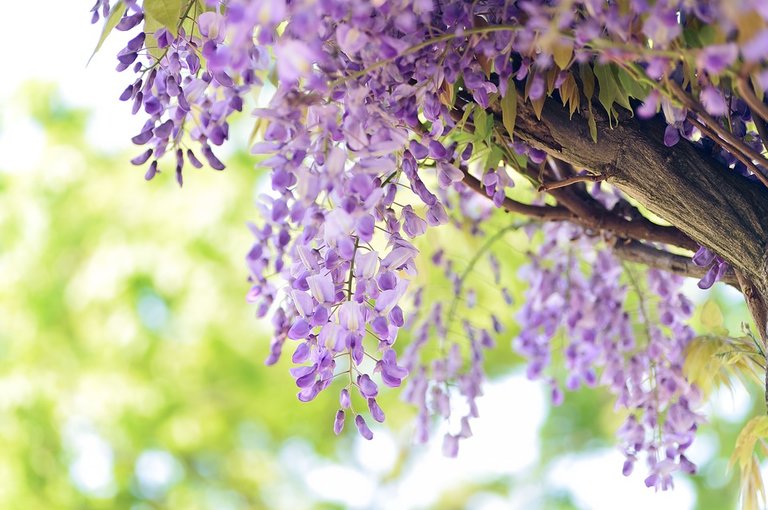
Something about vine-like trees I always insist on pointing out is that most of these have invasive roots. Unless you want them growing under your sidewalks, driveway, under your house, and into the neighbor's yard, it's best to plant them in an enclosed space where they cannot spread. Even better, do not plant them into the ground at all. They make great container plants if given enough root space, or root pruned annually.
A well-cared for tree will reward us with hundreds of dazzling flowers. Flowers are often showy and sweetly fragrant.
- Honeysuckle
- Star Jasmine, Night-Blooming Jasmine
- Angel's Trumpet (Beware: poisonous to pets/people)
- Wisteria (Chinese and Japenese varieties are scented)
- Golden Chains
Flowering Shrubs
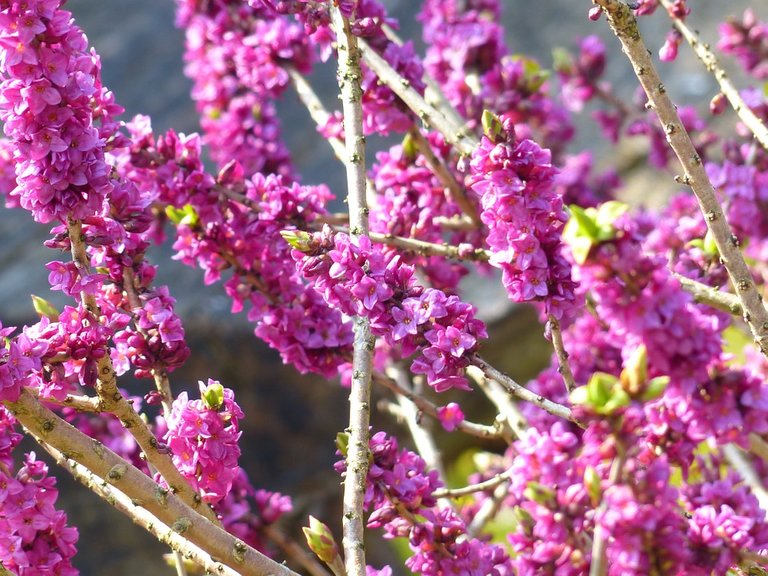
Usually grown as a small landscape shrub, they add wonderful ambiance when they produce blooms annually. Not only do the welcoming flowers invite curious visitors in, they will trap people's attention when they discover the intoxicating scent of those flowers. Makes a wonderful walkway plant to improve a visitor's first impression.
A huge advantage for growing flowering shrubs instead of flowering trees is they tend to produce flowers without fail every year, whereas flowering trees may not produce flowers for many years until it becomes mature. Shrubs are also smaller and require less maintenance than trees. This means faster results for developing a scented bonsai tree.
- Gardenia (Weak to frost, so bring indoors in winter.)
- Winter Daphne
- Laurel
- Lindon
- Butterfly Bush (invasive roots)
- Sweet Almond (Dies back to the root annually. Blooms for months.)
- Lilac
- Korean Spice Viburnum ("fragrant spice bush")
- Andromeda ("Pieris japonica", drooping plumes of white bell flowers.)
- Mock Orange (Unique orange-scented pure white, four-petal flowers.)
- Privet
- Camellia (evergreen. Lovely rose-shaped blooms in early Spring.)
Flowering Trees
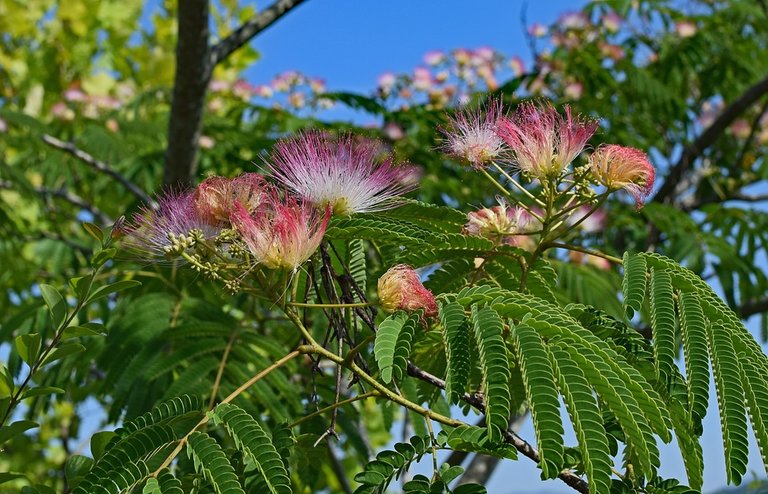
Many flowering trees in this list can grow quite tall, over 20 feet in height. That does not mean they cannot be pruned to stay small. With a strong root system that goes down deep and wide, many tall trees are capable of regrowing a new trunk if cut back every few years. Or it might even sprout new suckers from the roots, each one forming a new tree connected to the same root system.
Be careful not to over-prune a flowering tree. Flowers only appear on buds that appear on the old-growth branches. A well-pruned tree will have some low branches available for people to fully appreciate the scented flowers.
Talk to local plant nursery specialists to ask which varieties grow the best in the local climate. Ask what conditions are necessary to get flowers to appear. Ask when the nursery has trees in bloom to sample the scents.
Often times, even two trees of the same variety might not smell exactly the same, because they may have adapted differently in their growth patterns. One might not be as healthy as another. Ideally, select the best tree of the bunch when it's in full bloom to purchase.
- Silk Tree ("Mimosa Tree". Very invasive roots will form sucker trees.)
- Crape Myrtle (Only "Lagerstroemia fauriei" is scented.)
- Plum, Crabapple, Cherry, Purple leaf Sand Cherry
- Southern Magnolia (Large leaves and flowers. May be tricky to grow in small container as a bonsai. Attracts many birds.)
Most importantly, remember a tree that isn't blooming has no scent at all. It might be better to choose a conifer, herb, or citrus tree if you prefer a tree that is scented all year long.
Conclusion
Did any of the plants and trees in this list spark your interest? Did you come up with ideas for any other fragrant plants or trees that might also make a decent bonsai?
When pondering this question, I learned that there aren't really any wrong answers, there is just many unknowns. There are so many trees that have never been grown as bonsai with the intent of developing it to be appreciated for its scent. It seems to me this is a potential avenue for garden creativity that has not been widely explored by many.
Some of the trees in my list may not work well for bonsai, but that doesn't mean a person cannot succeed in growing it to have great success. A person who grows a tree at home in a new way may in fact discover something new about the tree that isn't normally apparent. Maybe it changes into a brighter green color when grown in the shade. Maybe it will help you become a friend (or enemy) with the squirrels. Endless possibilities to discover.
Winter is a great time of year to start planning out which plants we want to grow for the year coming up.
When choosing a tree for bonsai, there is always a million questions that spring up. What will it look like? Will it smell nice? Is it cold hardy? What kind of soil does it prefer? How much sunlight does it need? How often does it need water? When does it need fertilizer? How do I prune it?
Sometimes the answer to any of these questions will determine a person's choice as to whether or not they really want to own a particular plant and grow it.
My advice is to pick one that really connects with you and learn how to better take care of it. A tree that is highly esteemed by its owner is likely to receive plenty of the attention it needs.
And if maintenance isn't you're greatest strength, then find a plant that is super easy to grow that that still brings you happiness. Juniper, a favorite bonsai tree by many, and also highly fragrant, also requires the little maintenance, and can go days without watering.
All photos are open source from Pixabay.com.
#how-to #diy #build-it #tree #conifer #flower #blooms #flowering-plants #flowering-trees #flowering-shrubs #shrub #shrubs #flower #flowers #flowering #aroma #scent #scented #scented-trees #aroma-therapy #aromatherapy #scented-garden #scented-gardening #teaching #learning #instructions #educational #lemon #lime #citrus #pine #apple #sweet #vine
Find me on discord and chat with other tree growers, bonsai enthusiasts, and gardeners. We have quite a few accredited experts filling out our ranks, and a helpful Spanish-speaking community.
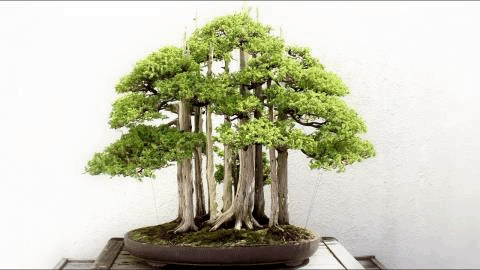

So much I love bonsais!
Posted using Partiko iOS
Hey tonight is the last night to RP for Friday Night Clash 13. Just wanted to let you know.